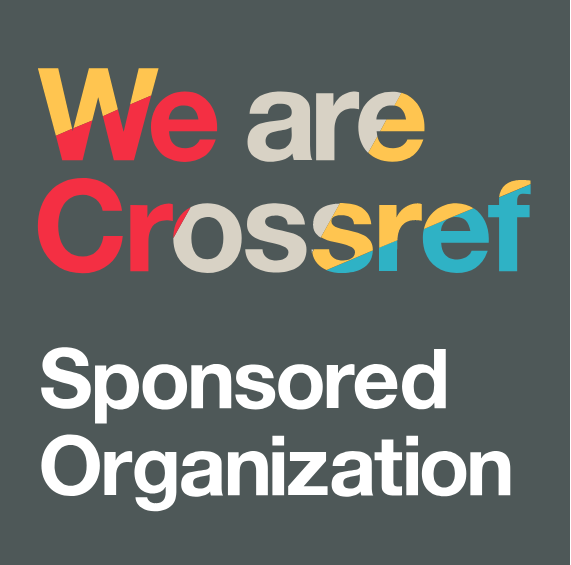Aspek Hukum dalam Paten Farmasi dan Implikasinya terhadap Akses Obat di Negara Berkembang
DOI:
https://doi.org/10.38035/dhps.v2i4.1847Keywords:
Paten Farmasi, Akses Obat, Fleksibilitas TRIPS, Lisensi Wajib, Kesehatan MasyarakatAbstract
Penelitian ini menganalisis aspek hukum paten farmasi dan implikasinya terhadap akses obat di negara berkembang, dengan fokus khusus pada Indonesia. Penelitian menggunakan pendekatan yuridis normatif dengan analisis perbandingan hukum untuk mengkaji implementasi fleksibilitas Perjanjian TRIPS di negara berkembang. Hasil penelitian menunjukkan bahwa perlindungan paten berdampak signifikan terhadap harga obat, dengan rezim paten yang lebih kuat berkorelasi dengan harga obat yang lebih tinggi di negara berkembang. Analisis kasus lisensi wajib untuk obat antiretroviral di Indonesia mengungkapkan keberhasilan sekaligus tantangan implementasi. Penelitian mengidentifikasi empat strategi hukum utama untuk meningkatkan akses obat: lisensi wajib, importasi paralel, ketentuan Bolar, dan mekanisme oposisi paten. Penelitian menyimpulkan bahwa negara berkembang, termasuk Indonesia, belum memanfaatkan secara optimal fleksibilitas TRIPS untuk menyeimbangkan perlindungan paten dengan kebutuhan kesehatan masyarakat. Penelitian ini merekomendasikan reformasi hukum termasuk penguatan prosedur oposisi pra-pemberian paten, penerapan kriteria patentabilitas yang lebih ketat, dan pengembangan kebijakan komprehensif yang menyelaraskan perlindungan paten dengan tujuan kesehatan masyarakat.
References
Abbott, F. M., & Reichman, J. H. (2007). The Doha Round's public health legacy: Strategies for the production and diffusion of patented medicines under the amended TRIPS provisions. Journal of International Economic Law, 10(4), 921-987.
Ali, F., & Rajagopal, S. (2020). Saving the Patent Law from the Pandemic: A Critical Analysis of the Patent Oppositions in India. NUJS Law Review, 13(3), 1-23.
Beall, R., Kuhn, R., & Attaran, A. (2015). Compulsory licensing often did not produce lower prices for antiretrovirals compared to international procurement. Health Affairs, 34(3), 493-501.
Chaudhuri, S., Goldberg, P. K., & Jia, P. (2006). Estimating the effects of global patent protection in pharmaceuticals: A case study of quinolones in India. American Economic Review, 96(5), 1477-1514.
Correa, C. M. (2007). Trade related aspects of intellectual property rights: A commentary on the TRIPS agreement. Oxford University Press.
Correa, C. M. (2016). Intellectual property in the Trans-Pacific Partnership: Increasing the barriers for the access to affordable medicines. South Centre Research Paper, 62.
DGIP Indonesia. (2021). Annual Report 2020. Directorate General of Intellectual Property, Indonesia.
Drahos, P. (2008). 'Trust me': Patent offices in developing countries. American Journal of Law & Medicine, 34(2-3), 151-174.
Dreyfuss, R. C., & Rodríguez-Garavito, C. (Eds.). (2014). Balancing wealth and health: The battle over intellectual property and access to medicines in Latin America. Oxford University Press.
Hoen, E. F. M. 't, Veraldi, J., Toebes, B., & Hogerzeil, H. V. (2018). Medicine procurement and the use of flexibilities in the Agreement on Trade-Related Aspects of Intellectual Property Rights, 2001–2016. Bulletin of the World Health Organization, 96(3), 185-193.
Kapczynski, A., Park, C., & Sampat, B. (2012). Polymorphs and prodrugs and salts (oh my!): An empirical analysis of 'secondary' pharmaceutical patents. PLoS ONE, 7(12), e49470.
Kementerian Kesehatan RI. (2020). Laporan Pelaksanaan Program HIV/AIDS 2019. Jakarta: Kementerian Kesehatan RI.
Krishnan, P. (2016). Biopharmaceutical patenting in India: Working within the product patent regime. Pharmaceutical Patent Analyst, 5(1), 13-16.
Kusumadara, A. (2018). Paten dan implikasinya terhadap kesehatan masyarakat Indonesia. Jurnal Hukum Ius Quia Iustum, 25(3), 439-464.
Kyle, M. K., & McGahan, A. M. (2012). Investments in pharmaceuticals before and after TRIPS. Review of Economics and Statistics, 94(4), 1157-1172.
Lanjouw, J. O. (2005). Patents, price controls and access to new drugs: How policy affects global market entry. NBER Working Paper No. 11321.
Léger, A. (2006). Intellectual property rights and innovation in developing countries: Evidence from panel data. Proceedings of the German Development Economics Conference.
Love, J. (2018). Delinkage of R&D costs from product prices. BMJ, 360, k1480.
Lybecker, K. M., & Fowler, E. (2009). Compulsory licensing in Canada and Thailand: Comparing regimes to ensure legitimate use of the WTO rules. Journal of Law, Medicine & Ethics, 37(2), 222-239.
Medicines Patent Pool. (2022). Annual Report 2021. Geneva: Medicines Patent Pool Foundation.
Mercurio, B. (2006). TRIPS-Plus provisions in FTAs: Recent trends. In L. Bartels & F. Ortino (Eds.), Regional trade agreements and the WTO legal system (pp. 215-237). Oxford University Press.
Moon, S., Jambert, E., Childs, M., & von Schoen-Angerer, T. (2015). A win-win solution?: A critical analysis of tiered pricing to improve access to medicines in developing countries. Globalization and Health, 7(1), 39.
Musungu, S. F., & Oh, C. (2006). The use of flexibilities in TRIPS by developing countries: Can they promote access to medicines? South Centre.
Park, W. G., & Lippoldt, D. C. (2022). Technology transfer and the economic implications of the strengthening of intellectual property rights in developing countries. OECD Trade Policy Papers, No. 211, OECD Publishing.
Reichman, J. H. (2009). Compulsory licensing of patented pharmaceutical inventions: Evaluating the options. Journal of Law, Medicine & Ethics, 37(2), 247-263.
Sampat, B. N. (2010). Institutional innovation or institutional imitation? The impacts of TRIPs on India's patent law and practice. Patenting and Innovation Research Workshop.
Sampat, B. N., & Shadlen, K. C. (2017). Secondary pharmaceutical patenting: A global perspective. Research Policy, 46(3), 693-707.
Sell, S. K. (2003). Private power, public law: The globalization of intellectual property rights. Cambridge University Press.
Shadlen, K. C. (2011). The political contradictions of incremental innovation: Lessons from pharmaceutical patent examination in Brazil. Politics & Society, 39(2), 143-174.
Son, K. B. (2019). Importance of the intellectual property system in attempting compulsory licensing of pharmaceuticals: A cross-sectional analysis. Globalization and Health, 15(1), 42.
Thambisetty, S. (2019). Improving access to patented medicines: Are human rights getting in the way? Law, Society and Economy Working Papers, 3/2019, London School of Economics.
Tomlinson, C., & Rutter, L. (2020). The economic & social case for patent law reform in South Africa. Fix The Patent Laws Campaign.
Vawda, Y. A., & Baker, B. K. (2018). Achieving social justice in the human rights/intellectual property debate: Realising the goal of access to medicines. African Human Rights Law Journal, 13(1), 55-81.
Watal, J. (2000). Pharmaceutical patents, prices and welfare losses: Policy options for India under the WTO TRIPS Agreement. World Economy, 23(5), 733-752.
WHO. (2022). World medicines situation report. Geneva: World Health Organization.
Yamabhai, I., Mohara, A., Tantivess, S., Chaisiri, K., & Teerawattananon, Y. (2011). Government use licenses in Thailand: An assessment of the health and economic impacts. Globalization and Health, 7(1), 28
Downloads
Published
How to Cite
Issue
Section
License
Copyright (c) 2025 Karimatussholikah Rujitoningtyas, Gevan Naufal Wala

This work is licensed under a Creative Commons Attribution 4.0 International License.
Copyright :
Authors who publish their manuscripts in this journal agree to the following conditions:
- Copyright in each article belongs to the author.
- The author acknowledges that the DHPS has the right to be the first to publish under a Creative Commons Attribution 4.0 International license (Attribution 4.0 International CC BY 4.0).
- Authors can submit articles separately, arrange the non-exclusive distribution of manuscripts that have been published in this journal to other versions (for example, sent to the author's institutional repository, publication in a book, etc.), by acknowledging that the manuscript has been published for the first time at DHPS.

























